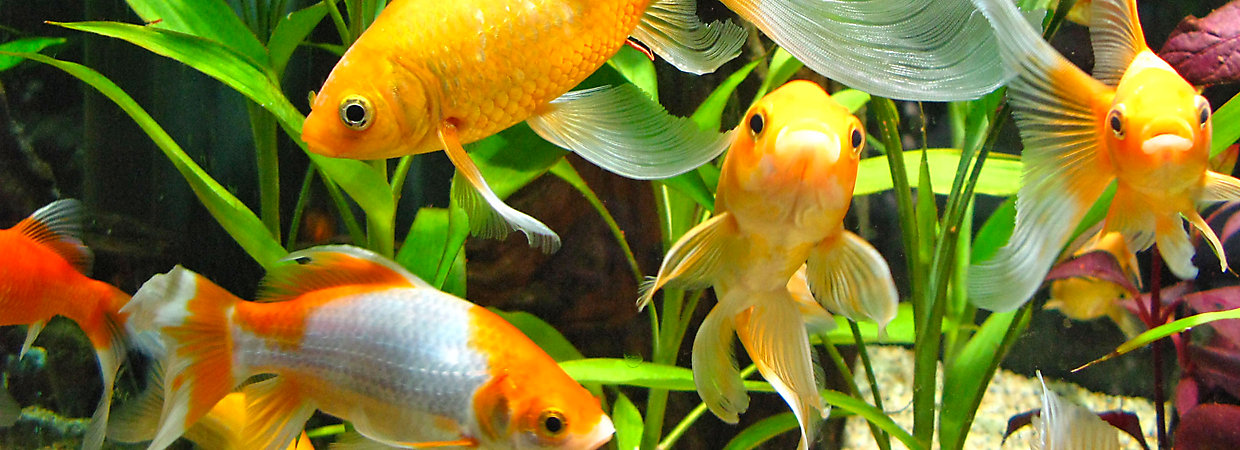Celikoglu Chronicles
Exploring insights and innovations from around the world.
Fishy Business: Secrets to a Thriving Aquarium
Unlock the secrets to a thriving aquarium! Dive into Fishy Business for expert tips and tricks to make your underwater world flourish.
Essential Tips for Maintaining a Healthy Aquarium
Maintaining a healthy aquarium requires more than just filling a tank with water and adding fish. One of the essential tips is to regularly monitor water quality. Test kits can help you check the pH level, ammonia, nitrite, and nitrate levels. It’s crucial to perform regular water changes, ideally 10-15% of the tank volume weekly, to keep toxins at bay. Additionally, maintaining a proper filtration system will ensure that harmful bacteria and waste are efficiently removed from the water, contributing to a stable environment for your aquatic life.
Another important aspect of aquarium maintenance is feeding your fish appropriately. Overfeeding can lead to water pollution and unhealthy fish. It's best to feed small amounts that can be consumed in 2-3 minutes, ensuring that any uneaten food is promptly removed. Also, be mindful of the specific dietary needs of your fish species. Regularly checking your aquarium’s temperature and reducing stressors, such as excessive noise and sudden changes in light, will help create a harmonious habitat. Remember, a well-maintained aquarium not only enhances the beauty of your space, but it also promotes the longevity and health of your fish.

Top 10 Fish Species for Beginners: A Starter Guide
If you’re eager to embark on the exciting journey of freshwater or saltwater fishkeeping, selecting the right species is crucial. Here’s a carefully curated list of the top 10 fish species for beginners that not only thrive in a variety of conditions but are also relatively easy to care for. Understanding these species can significantly enhance your experience as a budding aquarist, ensuring that your aquarium becomes a vibrant and lively environment.
- Betta Fish: Known for their stunning colors and flowing fins, Betta fish are perfect for beginners due to their hardiness and minimal space requirements.
- Goldfish: A classic choice, goldfish can adapt to a range of water conditions and are relatively easy to care for.
- Guppies: These small, colorful fish are not only beautiful but also breed easily, making them a fun addition to any aquarium.
- Tetras: Peaceful and sociable, tetras add a vibrant flair to your tank and thrive in schools.
- Platies: With their bright colors and easy-going nature, platies are fantastic for novice fishkeepers.
- Neon Tetra: Renowned for their neon blue and red stripes, these fish are easy to maintain and thrive in groups.
- Zebra Danio: Hardy and adaptable, zebra danios are perfect for beginners and add a touch of liveliness to the tank.
- Betta Fish: Often chosen for their striking appearance, bettas are also relatively low-maintenance.
- Clownfish: If you're interested in saltwater tanks, clownfish are a great choice for starters due to their hardiness.
- Angelfish: While they require slightly more care, angelfish can be a rewarding challenge for beginners.
What Are the Common Mistakes Aquarium Owners Make?
Aquarium ownership can be a rewarding hobby, but many enthusiasts often make common mistakes that can lead to unhealthy environments for their aquatic pets. One of the most frequent errors is overstocking the tank. New owners often underestimate the space needed for fish and other inhabitants, leading to overcrowding, which can cause stress and illness. Additionally, neglecting to perform regular water tests to monitor pH, ammonia, nitrite, and nitrate levels can result in poor water quality, jeopardizing the health of the fish and plants.
Another common mistake is failing to establish a proper cycling process before adding fish to the aquarium. This step is essential for establishing beneficial bacteria that break down harmful waste. Without it, new aquarium owners may experience deadly spikes in ammonia and nitrites. Lastly, underestimating the importance of routine maintenance, such as water changes and filter cleaning, can lead to an unhealthy tank environment. By avoiding these pitfalls, aquarium owners can create a thriving aquatic ecosystem.